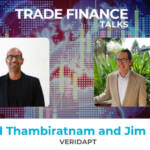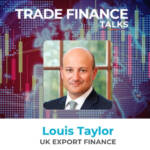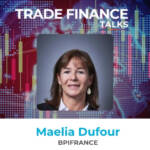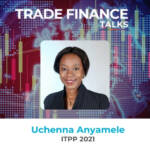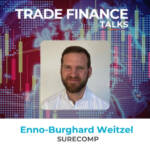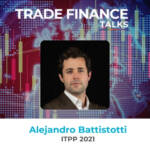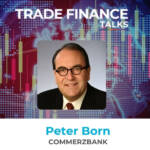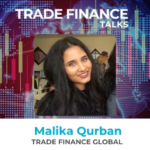This article aims to bring concreteness into the abstract forecast of a future where blockchain is an integral part of trade finance, by exploring the most immediate and meaningful applications of blockchain in trade finance
Forecasting and backcasting
A future where blockchain is an integral part of trade finance has been widely forecasted. New potential applications of blockchain technology through the lifecycle of the trade are in constant development.
However, so much input and so much promise is detaching us from the most immediate and practical ways of adopting this technology in trade finance. For instance:
Have you ever seen a document on a blockchain?
Do you know how to access it?
Do you have a concrete image of how you would integrate it into your current work stream?
I’m guessing that the answer for most of us is no. Exactly for that reason, the aim of this article is to bring concreteness into the abstract forecast of a future where blockchain is an integral part of trade finance, by offering a roadmap on how this technology can be integrated in the origination and distribution of trade finance assets.
Much of the dialogue around the integration of blockchain in trade finance takes the form of a forecast around potential applications, underlying technologies, and adoption. Forecasting is a necessary part of any future project, however, when the project has an undefined timeframe, and, as in the case of blockchain, the field is constantly mutating, forecasting becomes more challenging.
For this reason, I would like to reverse the logic and attempt to backcast; that is, to work backwards from a future in which blockchain is already integrated into trade finance, and determine what went right for this to happen.2 What was the simplest application? Who were the first adopters? Which country regulated it first?
What needs to happen for blockchain to be adopted
There are four main elements that need to align in order for blockchain to be adopted and have a significant impact on trade finance, namely:
- application: which of all the potential uses of blockchain has the most evident ease of adoption with the highest potential impact for trade finance?
- adoption: who are the first movers into a tokenised trade finance environment? Which incentives do they have and which problems are they trying to solve?
- technology: which technology has the better prospect to dominate the market in the future and scale up?
- regulation: which steps are being taken by countries around the world, and which traditional financial centres are moving to regulated tokenised securities?
Application: entering through repackaging
There are dozens of potential applications of blockchain in trade finance. Nevertheless, if we are to streamline our backcasting exercise, the question becomes: of all possible blockchain applications, which one has the simplest implementation while having the largest impact on trade finance? In my opinion, this would be to apply blockchain to the repackaging and distribution of trade finance assets.
“There are dozens of potential applications of blockchain into trade finance”
Since the 1970s, the traditional finance industry has been using securitisation to convert assets into a marketable security, which are held with a centralised custodian or registry, and are traded in OTC or listed markets. Securitisation has since found its way into trade finance assets repackaging and distribution.
Consequently, the tokenisation of securities representing trade finance assets is the least invasive and first logical step for bringing blockchain into trade finance distribution. This is currently being done in several pilots and proofs of concept by different market players.
The application of blockchain through tokenisation relates to asset ownership and distribution. The most basic concept of ownership is direct ownership in which an entity owns an asset. Through traditional repackaging, such as a securitisation, indirect ownership of an asset is created by:
• wrapping it into a fund
• allowing for it to be fragmented
Blockchain technology can be used as a way of repackaging assets through tokens that represent either an individual asset or ownership of a fund share (the fund containing a single asset, various assets, or various tokens). Transforming trade finance instruments into digital assets is a clean solution for transitioning to a blockchain-based trade finance distribution, because it leverages the existing off-chain origination and legal frameworks to structure trade finance, and repackages it into an on-chain token with embedded economic rights. Once the trade finance asset is on-chain, then the door is open for even more specific blockchain applications, such as embedding trading instructions, compliance checks, allowing for real-time settlement, custodial safekeeping, asset servicing, etc.
Nevertheless, the real benefit of the tokenisation of an illiquid trade finance asset is the enhanced market access that it affords, making distribution to retail/small-ticket investors possible, in an asset class that has been historically reserved for commercial banks and sophisticated investors.
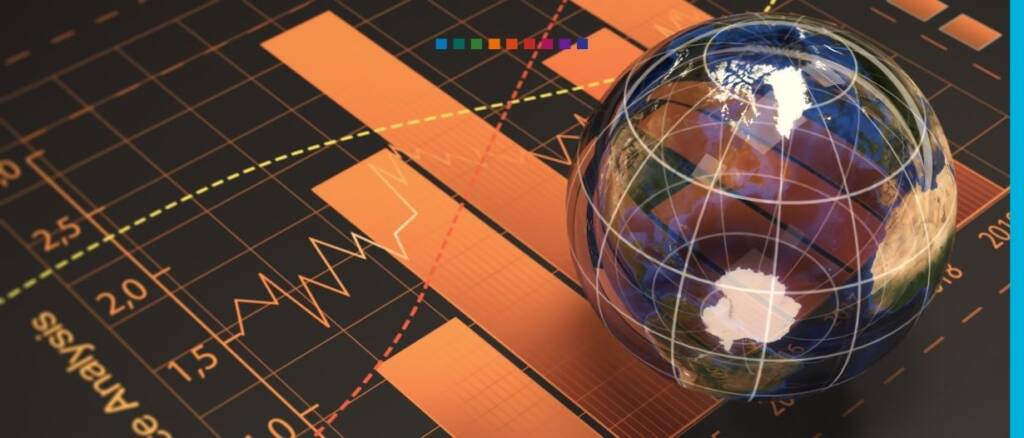
Adoption: the retailisation of capital markets and the trade finance gap
If the simplest path to integrate blockchain in trade finance is the tokenisation of trade finance assets, what are the incentives for the existing players to adopt the solution? Although trade finance and blockchain are normally associated, both realms operate under wildly different dynamics. Traditional finance operates in the realm of regulatory permissibility, whereas decentralised finance (DeFi) operates on the premise of the technically possible. However, the problems of both disciplines are complementary.
Trade finance has been historically dominated by commercial banks. In recent years, regulatory pressure imposed increase capital charges on banks for holding trade finance assets in their balance sheets.7 This resulted in much curving funding, particularly for below-average credit rating trade finance players, with some banks even exiting the trade finance space altogether. The lack of funding produced a $1.5 trillion ‘trade finance gap’ that is only getting bigger.8
This nudged traditional trade finance players into a model of ‘originate to distribute’, and opened a window of opportunity for institutional investors to come into the trade finance space looking for a complexity and illiquidity premium as an alternative to low rates. The DeFi blockchain ecosystem operates under different principles and tries to solve a different set of problems. Increased regulation, protecting retail investors, and negative rates have left the less sophisticated investor with limited asset allocation opportunities, and unmet needs in terms of access, yield, and asset classes. The advancement of new trading platforms and increased access to financial information has prompted a retailisation of the financial markets, with retail investors accounting for 25% of stock market activity in 2020. Blockchain and, more particularly, cryptocurrencies could address this access problem, by allowing retail investors to invest in more sophisticated asset classes, even in small-size tickets.
It’s apparent that the individual problems of each field can be synthesised into a common solution, namely: tapping into the yield-hungry, access-limited retail/wholesale investor, to bridge the trade finance gap through the tokenisation of trade finance assets. If these interests align, we could imagine a future where a retail investor can buy a fraction of a token representing a pool of trade finance assets from $5. Sounds wild enough?
Naturally, this synthesis would come with a new set of rules and dynamics that stem from the logics of DeFi, such as the impact of crowd behaviour, game theory, and a perpetual innovation dynamic on the back of open-source platforms.11 This would also change the way investments are held, moving from custodian accounts to
a centralised investor’s wallet. Beyond speculation, for this synthesis to happen, we need the most adequate technology and appropriate regulation.

Technology: the survival of the fittest
The constant change in the blockchain space makes it necessary to discern which technologies will have an actual application in trade finance from those that are more likely to gain a market share in future.
There are a few basic concepts to understanding the blockchain ecosystem:
- A core protocol is the set of rules that determines how a blockchain operates and is the basis for further applications, like the Ethereum protocol or the Bitcoin protocol.
- A decentralised application (dApp) is a front-end application built on top of the core protocol that serves/offers a given purpose.
- A smart contract is a computer code that automatically executes all or parts of an agreement and is stored on a blockchain-based platform. It is based on specific data triggers (if/when X, then Y) that allow the functioning of dApps to fulfil transactions.
- A token is a digital representation of a stake in a decentralised ledger, and can be used for different purposes, such as access, governance, and representation of ownership over physical and digital assets. Tokens can be native tokens, which are essential for the functioning of the underlying blockchain protocol (for example BTC or ETH), or asset-backed tokens which represent title or ownership to some real-world asset.
Concerning protocols, there are three main protocols: Bitcoin, Ethereum, and Cardano. Ethereum blockchain stands a bigger chance to impact trade finance: it is an open-source smart contract platform; it offers more potential applications than the Bitcoin protocol; and it is currently shifting to a more energy-efficient paradigm that would mitigate ESG concerns. Cardano is another relevant protocol that has been praised for using proof-of-stake (PoS) as a consensus mechanism, which makes it more energy-efficient.
Cardano is built using the Haskell programming language, which is commonly used in the financial industry,15 offering in principle a more seamless integration for financial applications.
Besides the market leaders, new protocols are constantly being developed. Recently the XinFin protocol and its coin, XDC, have received some attention. The protocol consists of a 3rd generation protocol operating on a Delegated Proof-of -Stake Consensus network, and has been specifically designed to support the tokenisation of trade finance.16 It offers interesting features versus the Bitcoin and Ethereum protocols, with a reduced processing fee, lower energy consumption, and it supports over 2,000 transactions per second. When evaluating protocols, interoperability and energy efficiency – with its ESG ramifications – will be the two leading factors that will set the tone in the race for adoption in trade finance.
Concerning front-end applications, tokenisation of trade finance assets is the trend to watch, regardless of which back-end protocol. Tokenisation can take different forms: tokens can be fungible or non-fungible (NFTs). Asset-backed, non- fungible tokens are particularly interesting for trade finance, as they can be used to represent ownership of unique assets.
In trade finance, this means the tokenisation of documentary credit, like letters of credit or bills of lading, or the tokenisation of a note or share in a fund holding various trade finance assets, as described above.
“Beyond the adoption of any of these technologies, lies a new set of questions.”
Beyond the adoption of any of these technologies lies a new set of questions, such as the valuation of trade finance digital tokens, where virality, digital scarcity, and crowd behaviour will play a role. This also opens the possibility for new ways of trading, such as yield farming, flash lending, and staking. Regardless of the ultimate ramifications of this process, the tokenisation of trade finance assets in an energy-efficient and open-source protocol is the simplest way to take trade finance on-chain, and keep the door open for bringing even further blockchain applications into the field.
Regulation: the price for scale
The uses, incentives, and technologies described until now require a regulatory push if they are ever going to scale up. Today the European regulatory landscape on crypto-assets is rather scattered with an incipient legal taxonomy of digital assets.
Tokens fall under two categories:
- Regulated tokens – which fall under any of the existing or pilot EU financial regulation:
- digital tokens qualifying as e-money;
- securities tokens;
- DLT transferable securities.
- Unregulated tokens – which are not covered by financial regulation:
- utility tokens;
- asset-representing tokens;
- e-money tokens such as bitcoin.
Tokenised distribution of trade finance would most likely fall under the ‘DLT transferrable securities’ category, which refers to a subset of securities tokens that meet the definition of transferrable security under MIFID2, for which there is currently a pilot regulation.
In parallel to the European regulatory efforts, individual member states are taking steps to regulate digital tokens as financial assets. Last April, Luxembourg passed a new bill giving tokenised securities legal status.20 Other countries like Malta and Singapore are leading the way in crypto regulation. However, given the relevance of Luxembourg regulation for financial securitisation in general, its move to regulate tokenised securities might have a larger compound effect in the future of trade finance.
Conclusion
If we read across the partial conclusions of this article, we could argue that it wouldn’t be rare to see, in the short-term future, a tokenisation of trade finance assets on the Ethereum protocol, regulated under Luxembourg law and ready to be distributed to investors in Europe. Nevertheless, the goal of this article is not to predict the future, but to provide the reader with concrete tools to discern what is technically possible, regulatory permissible, and more likely to be adopted by the market to turn the blockchain revolution in trade finance into reality.
The second and most important point is that trying to sketch the simplest avenue to an impactful implementation of blockchain technology in trade finance is only the beginning of an even deeper entanglement of these two fields, which opens a new window of uncertainty and innovation.
And forecasting the beginning at the end, yet again.




















